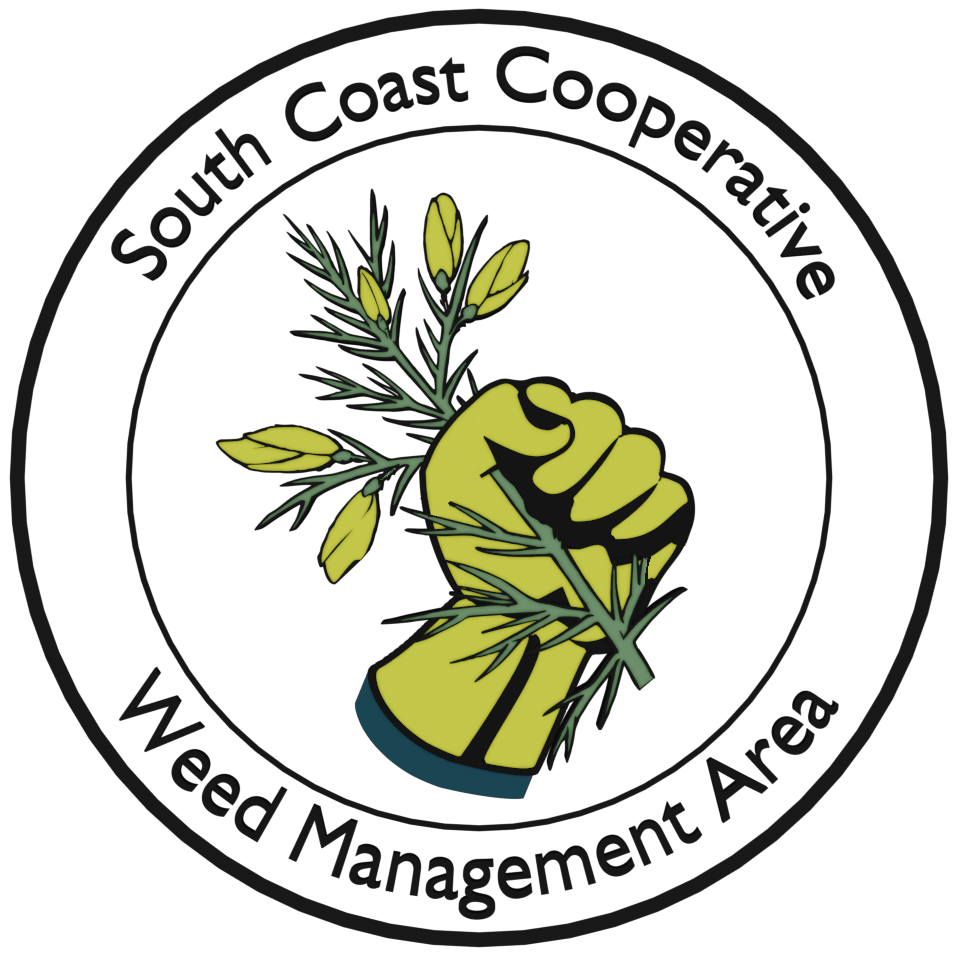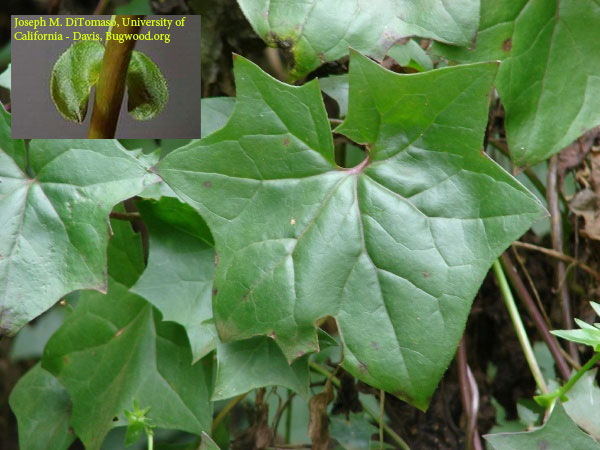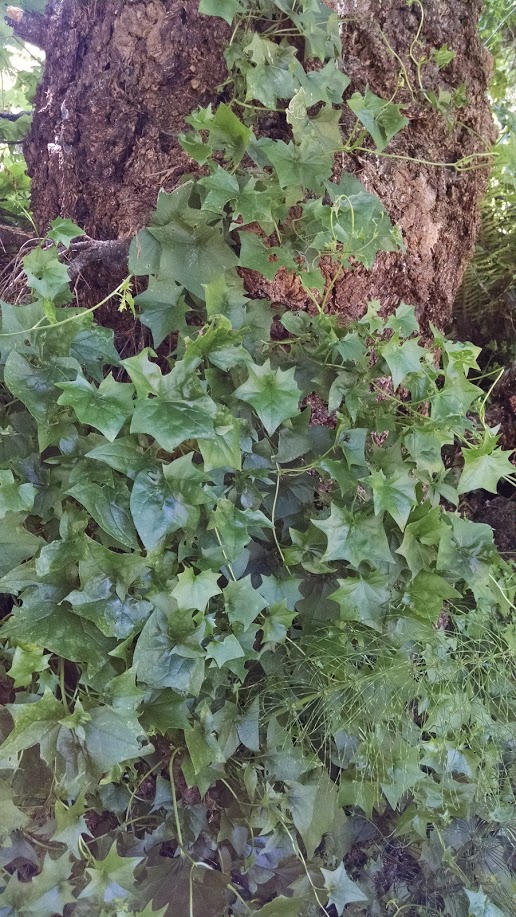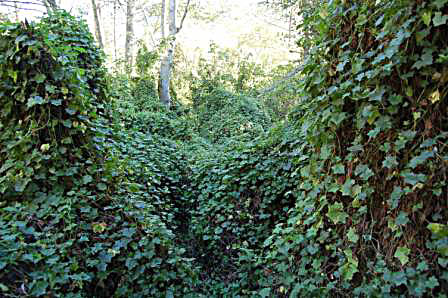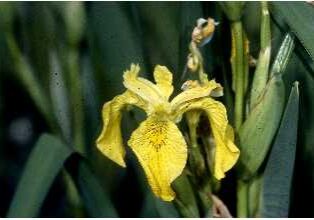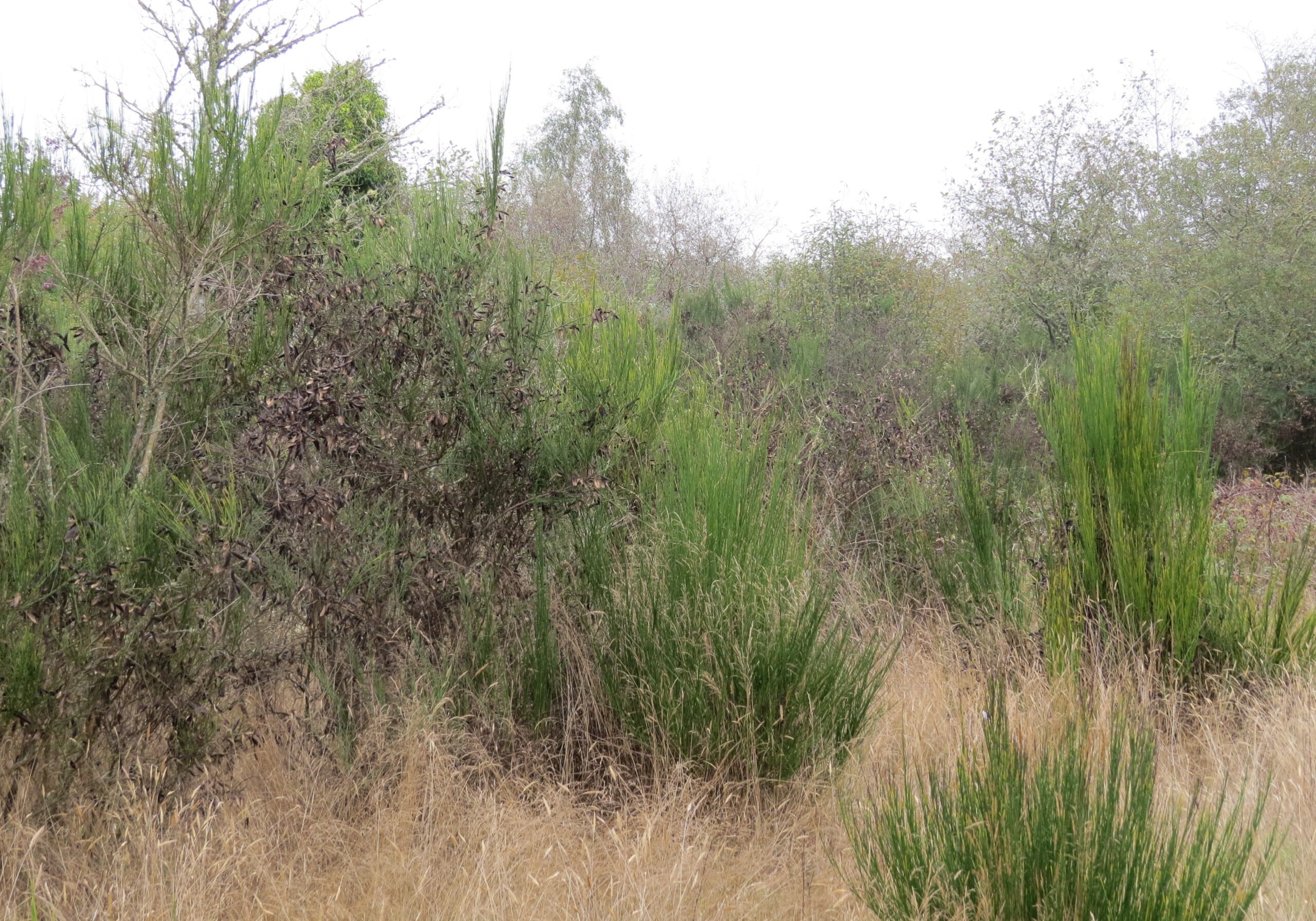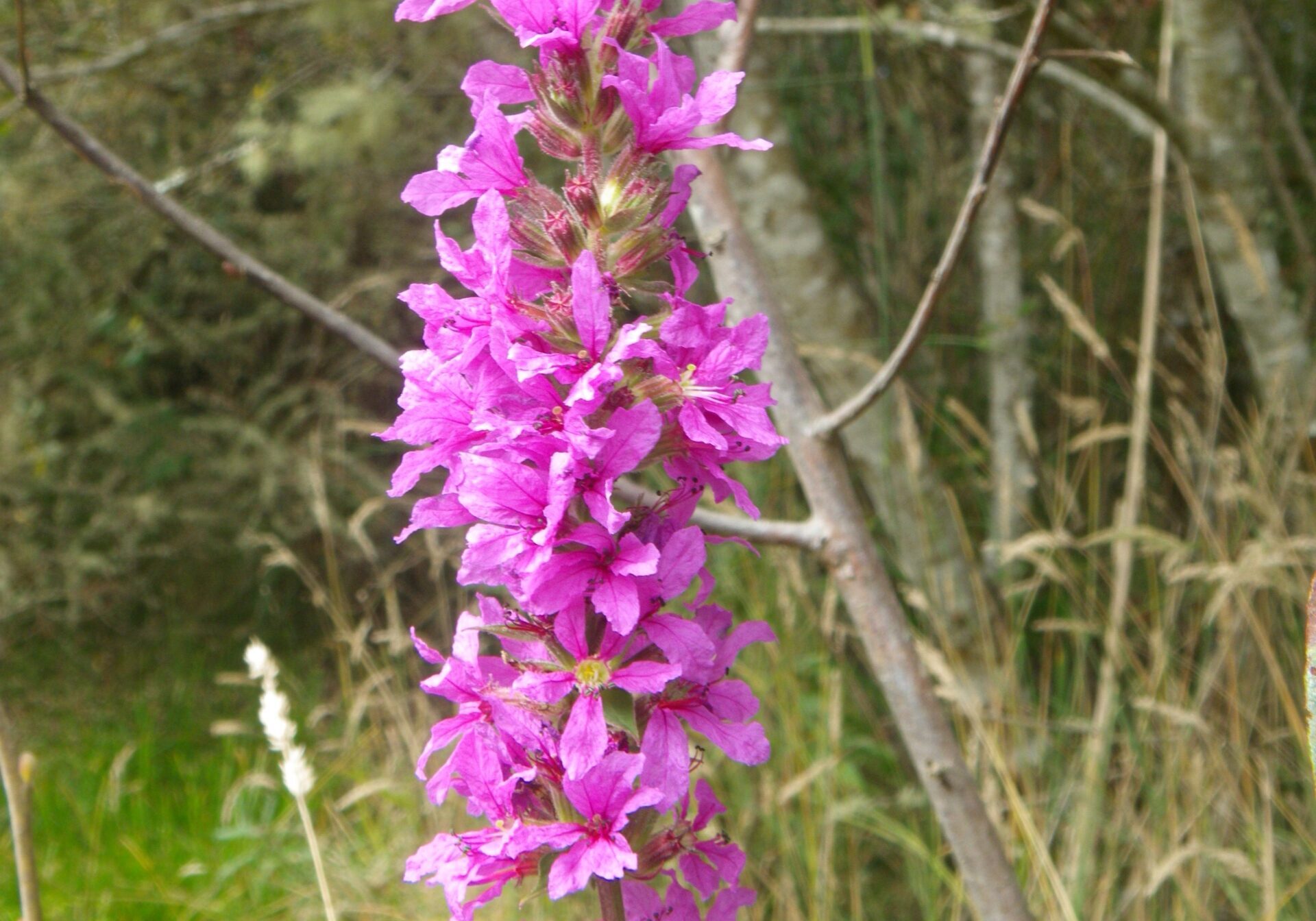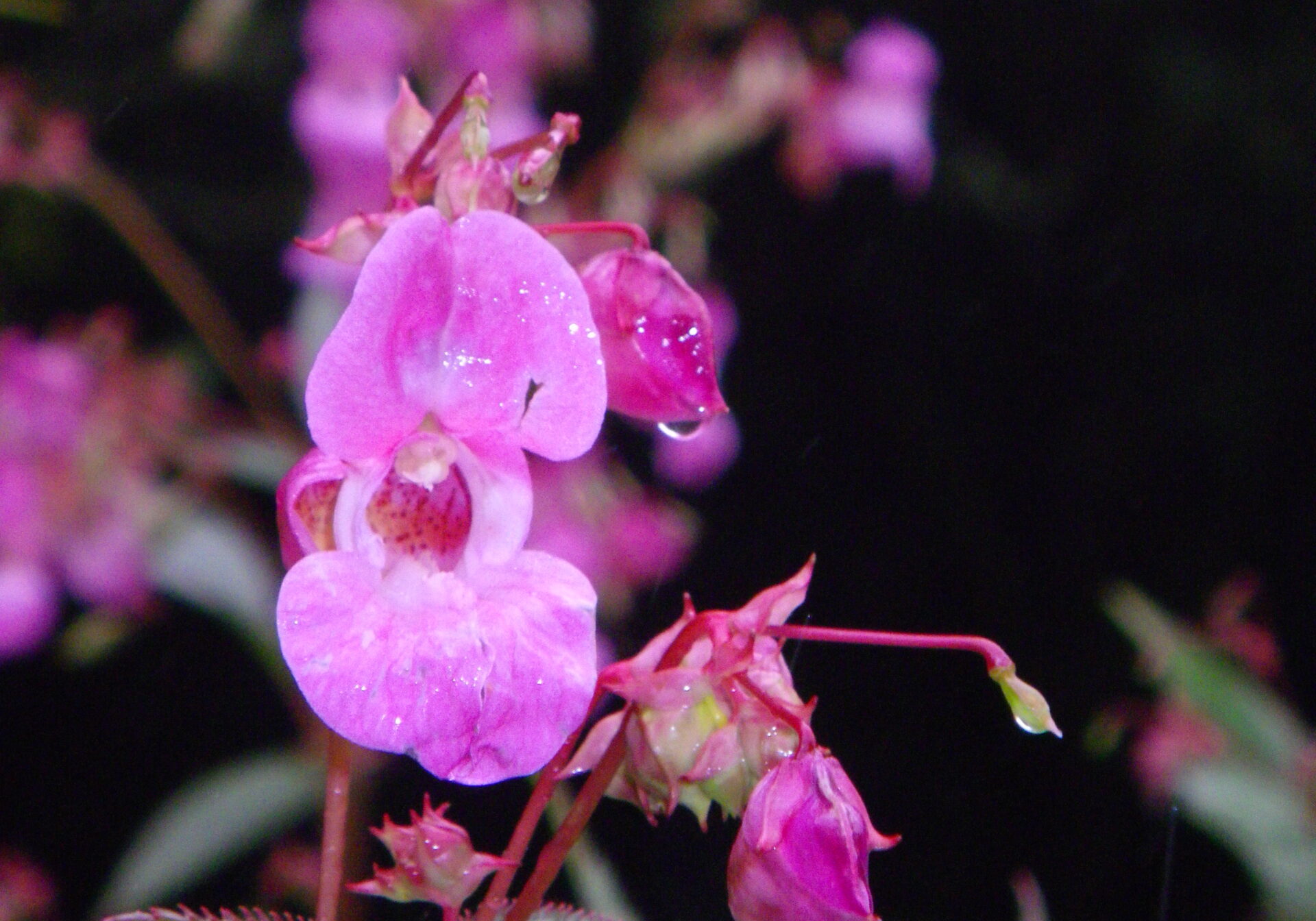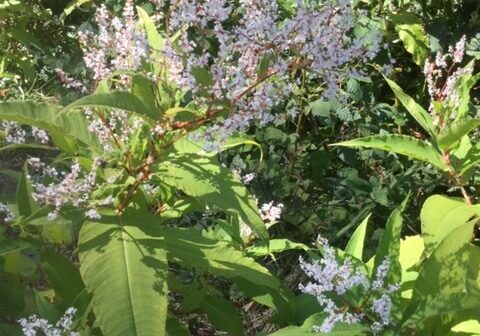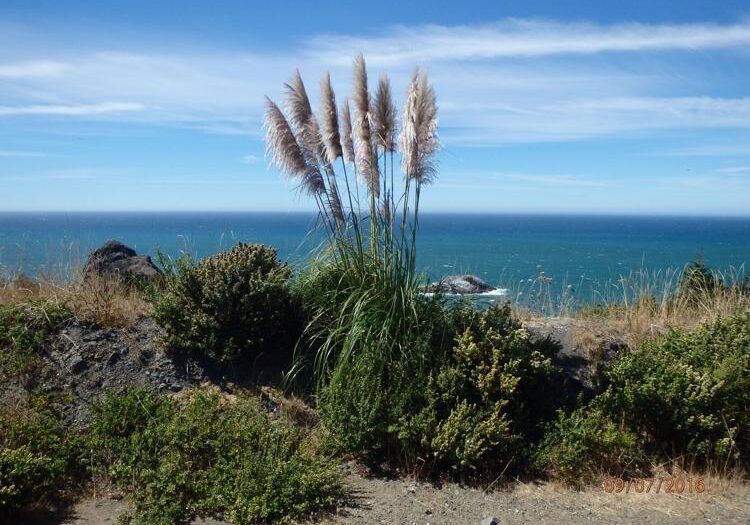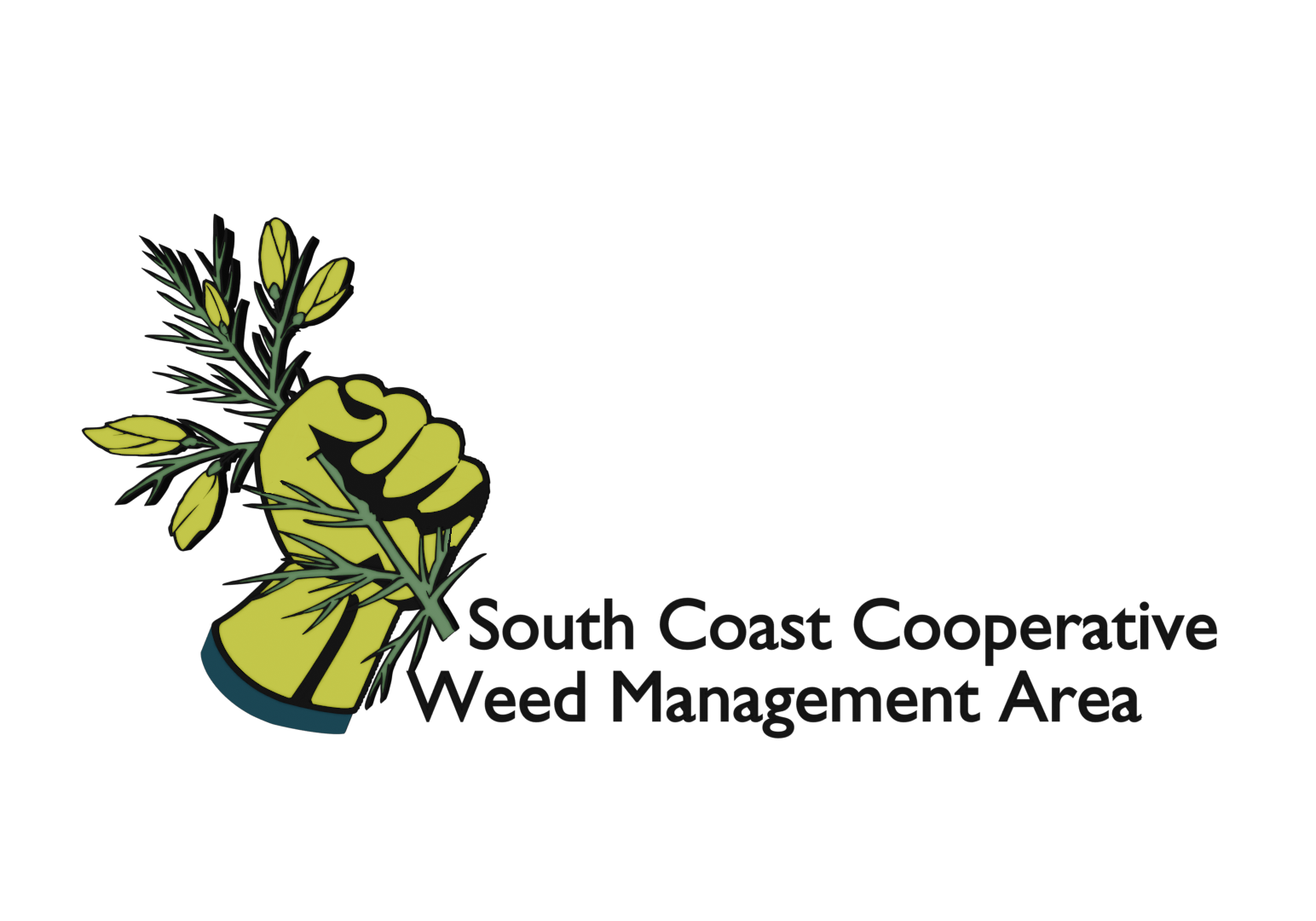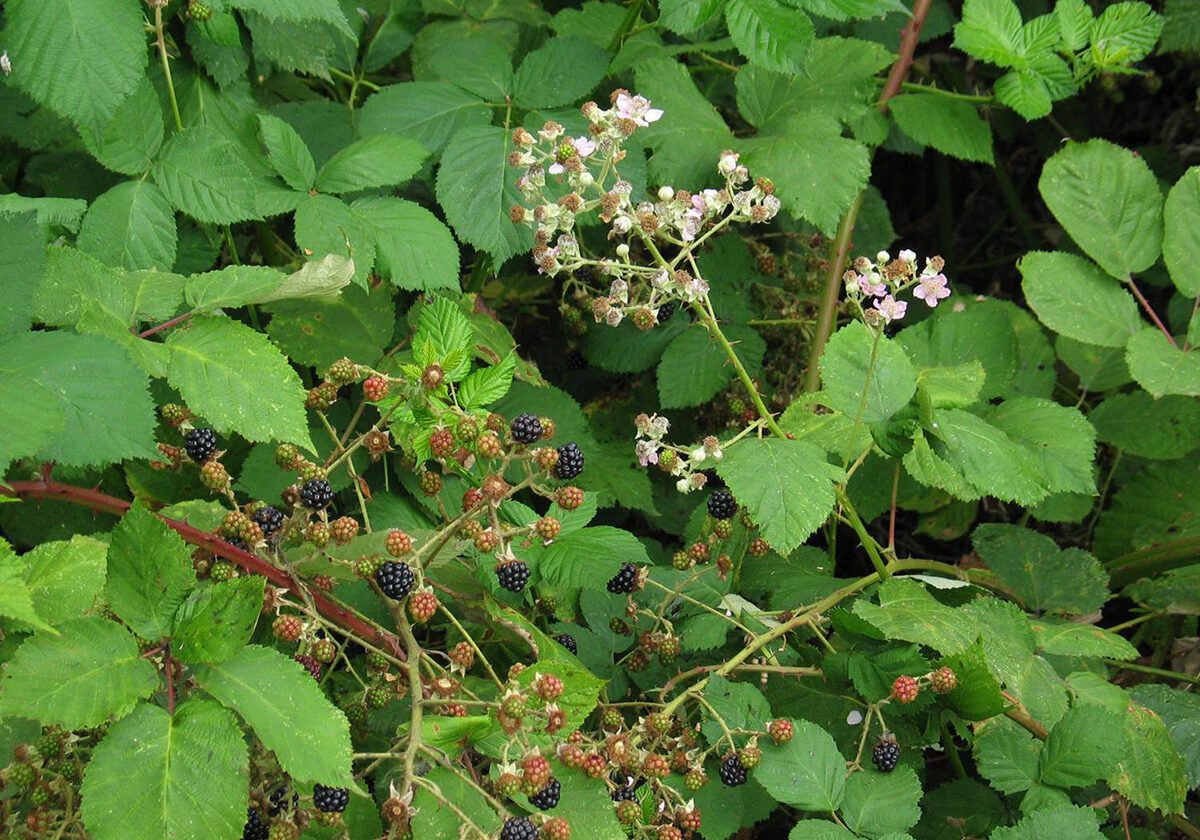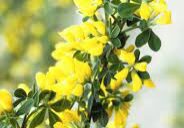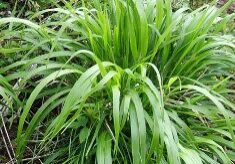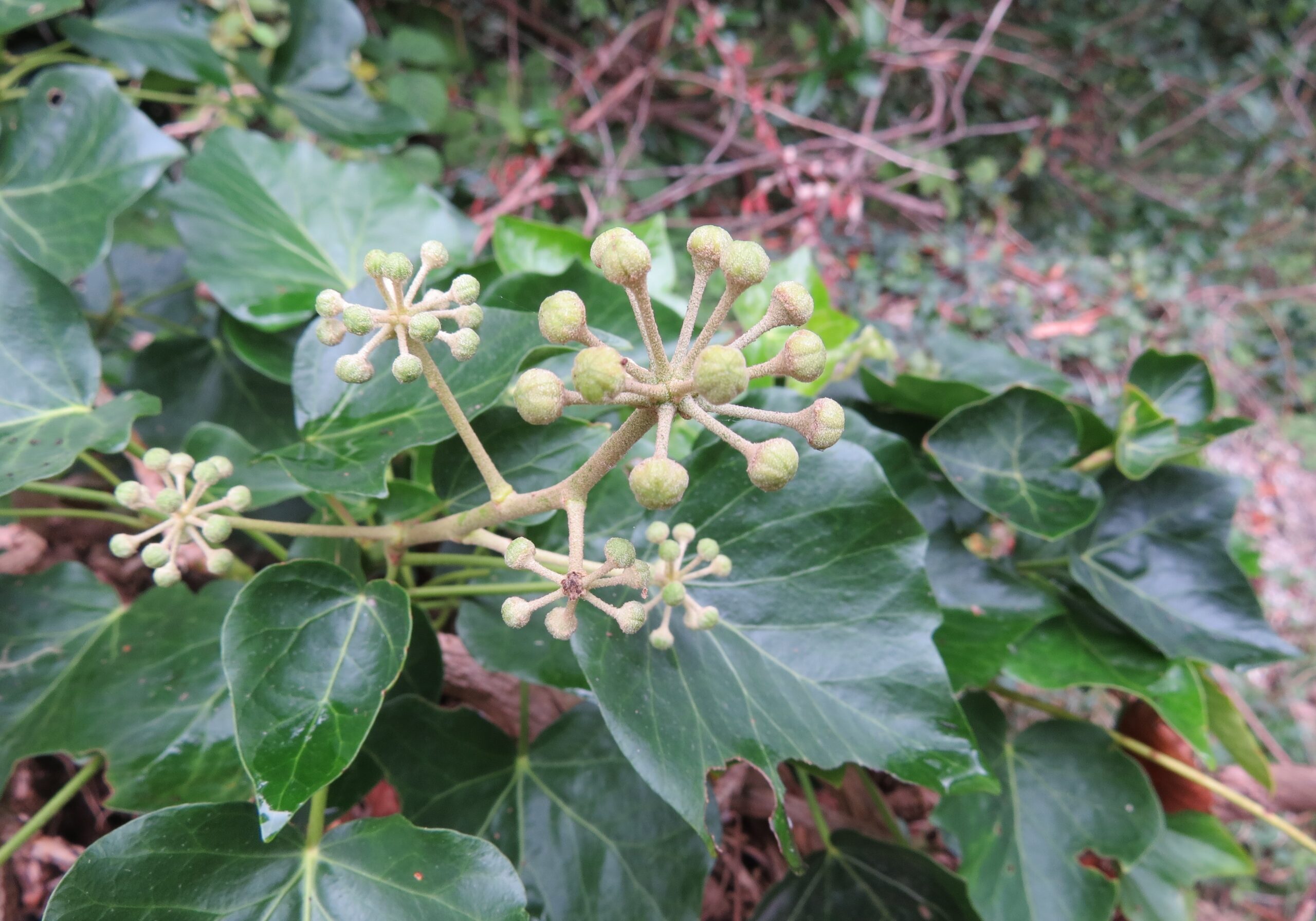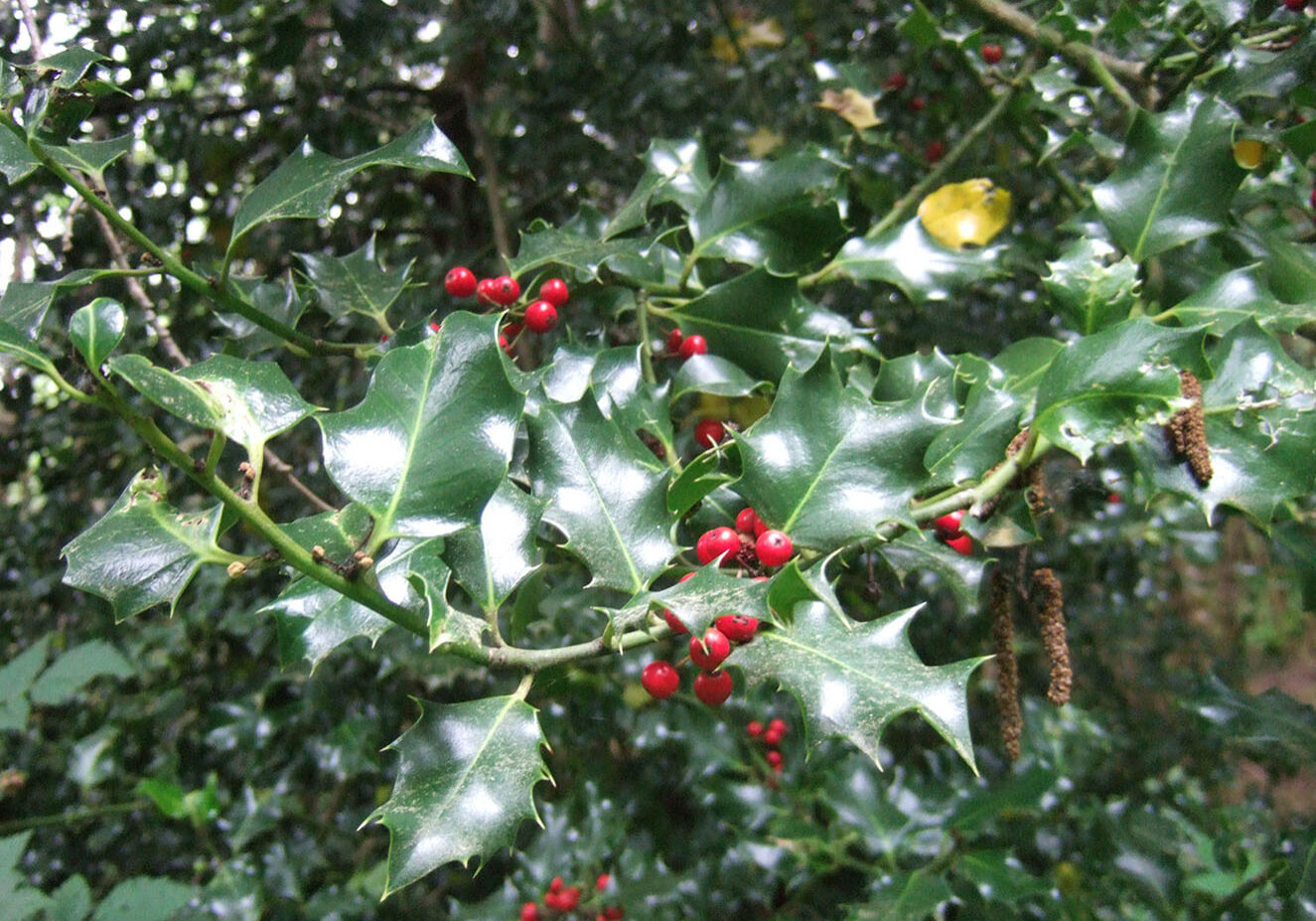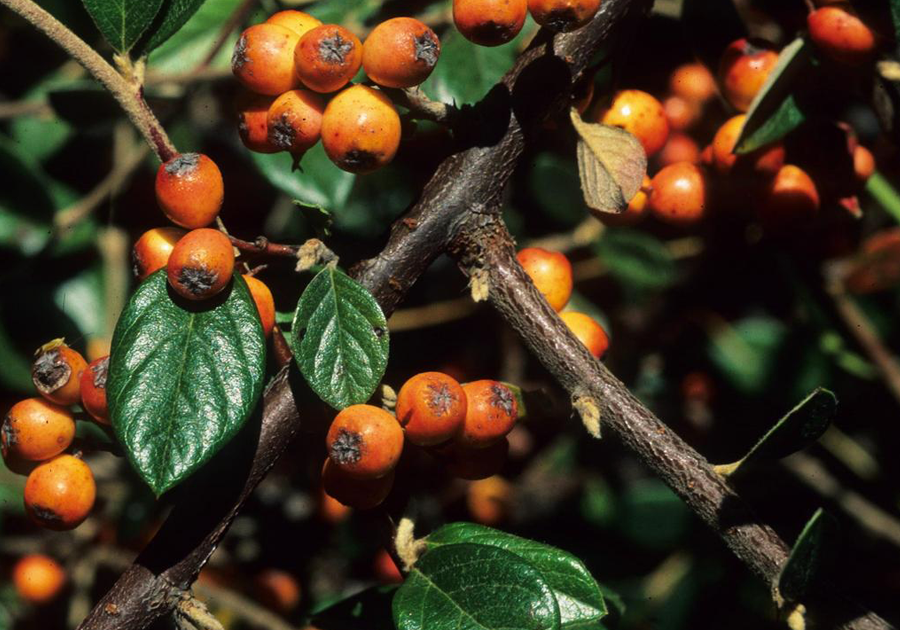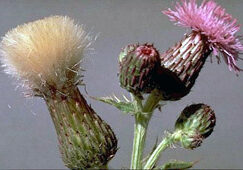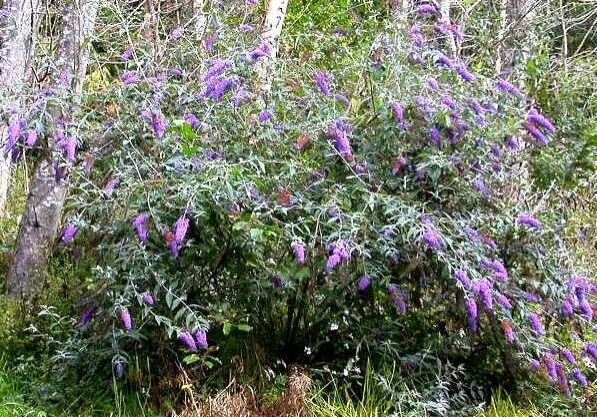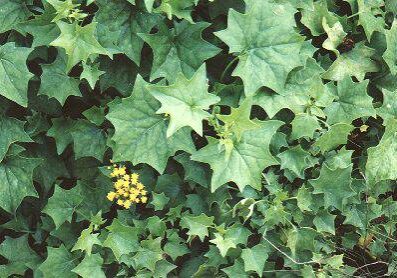
Description
Cape ivy is an escaped ornamental vine native to South Africa that poses a serious threat to coastal riparian and forested areas. Unlike other types of ivy that are more visible, cape ivy tends to hide and lurk under other plants, where it forms a dense mat and spreads extensively through the understory, blocking light and smothering other vegetation. Currently, its only known populations are in Curry County, but it has been found in at least one Oregon nursery, so there is the possibility for it to get planted as an ornamental and escape into the surrounding landscape.
How to recognize
Capy ivy is a hardy perennial vine that may be seen draping from tree to tree (earning it the nickname of “kudzu of the west”). It has long and fragile stems, small yellow flowers, and an extensive rhizome system. Its glossy, light green leaves have five points, deep lobes, and resemble a maple leaf. They are smaller, thinner, and brighter green than English ivy leaves.

For more info, check out the Oregon Department of Agriculture’s spotlight video on both cape ivy and English/Atlantic ivy—and how to tell the difference! https://www.youtube.com/watch?v=5TmMhfIdzBk
What to do if you find it
It is unlikely that you will see it, but if you see any unusual looking vines that you suspect might be cape ivy, reach out ASAP to a noxious weed professional:
- Coos Bay/North Bend and surrounding areas
Coos Watershed Association: Contact person pending (cooswatershed.org) - Bandon, Coquille, Powers, Myrtle Point, and surrounding areas
Coquille Watershed Association: [email protected] - Curry County (New River to Brookings)
Curry Watersheds Partnership: [email protected]
Or call 1-866-INVADER or REPORT ONLINE HERE
Additional Information
While cape ivy and English/Atlantic ivy look similar, they aren’t actually all that closely related. Cape ivy’s flowers are more similar to tansy ragwort, and it’s in the sunflower family.
Cape ivy is toxic to animals when ingested.
External links for more info:
https://www.oregon.gov/ODA/shared/Documents/Publications/Weeds/CapeivyProfile.pdf
- All Flower Colors
- Orange & Yellow
- Pink & Purple
- White & Green
